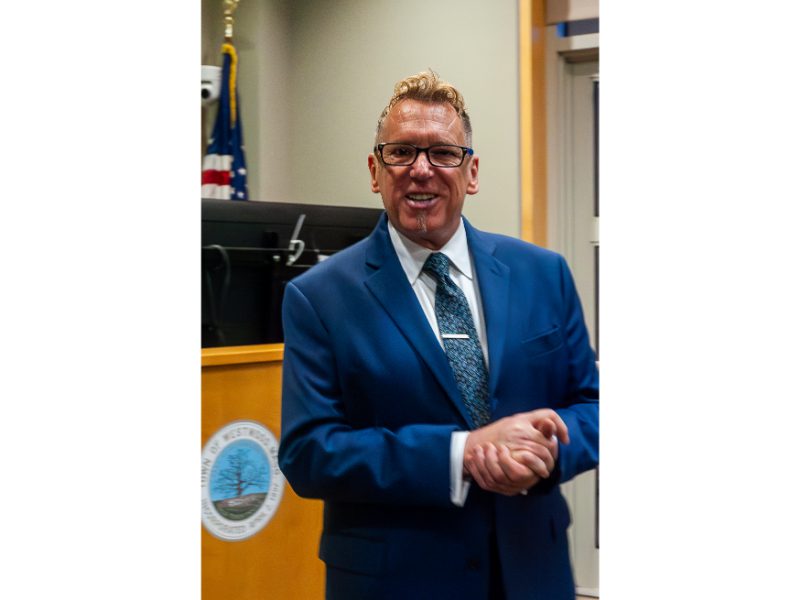By Audrey Anderson
Hometown Weekly Reporter
Daniel Harrington, a former columnist at “The Providence Journal” and a Director of the Rhode Island Hall of Fame, brought his “Larchmont Remembered” tour to Westwood Public Library (WPL), after making many stops at lucky libraries in both Rhode Island and Massachusetts. Calling the sinking of The Larchmont “America’s most horrific sea disaster,” Harrington held the assembled group spellbound through his engaging story told with imagination, drama, stirring live music, and historical photography and newspaper accounts.
Beginning with the barking of a dog in the night and a crash victim approaching a lighthouse on Block Island, Harrington then showed photos of Captain George McVay, Pilot John Anson, a group of Salvationists, Harris and Bertha Feldman, Millard Franklin, a.k.a The Boy Houdini, Sadie Golub, and others who played a role in the tragedy. Harrington exhorted the audience to keep these people in mind as he continued.
Built in 1885, a steamship named The Cumberland regularly traveled between Boston and Maine. In 1902, it collided in Boston with The Admiral Farragut, a fruit transport ship carrying a load of bananas. Captain Allen saved the ship by bringing it into shallow water.
Later, The Cumberland was sold to Joy Co., which repainted the ship and renamed it The Larchmont. Captain George McVay sailed the ship from Providence to New York on overnight “budget” runs--$1 for the trip and another $1 for a state room, if desired. Weeks into its new route, The Larchmont caught on fire in the Bronx, collided with a schooner in Connecticut, and ran aground at Prudence Island. Additionally, a passenger was once shot dead on board. The Larchmont became known as the “Hoo Doo Ship.”
February 11, 1907 was a cold night--20 degrees below zero with gusts up to 50 mph and 20-foot waves--and The Larchmont was on its way to New York. The Harry Knowlton, carrying a cargo of heavy coal, headed straight for the Larchmont. Pilot John Anson called to The Knowlton’s pilot to turn away, but the wind pushed the ship into the Larchmont in front of the wheel, breaching its watertight compartments and breaking the main steam line.
Most passengers ran out in their night clothes and choked to death in the steam. Out of approximately 200 passengers, only 18 survived, through their own heroic efforts and those of others.
Fred Higersell , a16-year-old runaway from New York, ended up in a lifeboat with ten dead men. A wave washed him onto the beach. He was the man approaching the lighthouse on Block Island at the beginning of the presentation. The Salvationists sang hymns on the upper deck as the boat sank. Several passengers, including Harris and Bertha Feldman and Said Golub, found shelter on the hurricane deck, which broke away from the ship and floated in the ocean.
A passing boat saved many severely frostbitten passengers and brought them to The Kentucky to sleep in blankets overnight. As they defrosted, there was a terrifying sound of tossing and crying.
The Kentucky sailed for Providence two days later. The frozen dead had to be hoisted off the boat. They were brought to the Thomas Monahan Mortuary’s carriage house for identification by relatives.
The previous description is the bare outline of the story, but Harrington made it sing with bits of dialogue and quotes from news stories, bringing the characters’ heroic deeds and fearful emotions to life. As an ode to Millard Franklin, or “The Boy Houdini,” a victim who was destined for a successful stage career, Harrington played and sang a soulful version of “Motherless Child.” Along the way, Harrington’s many details, photos, stories, and dramatizations helped the audience appreciate the feeling and impact of the tragic story.























